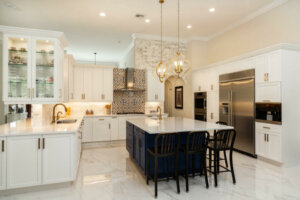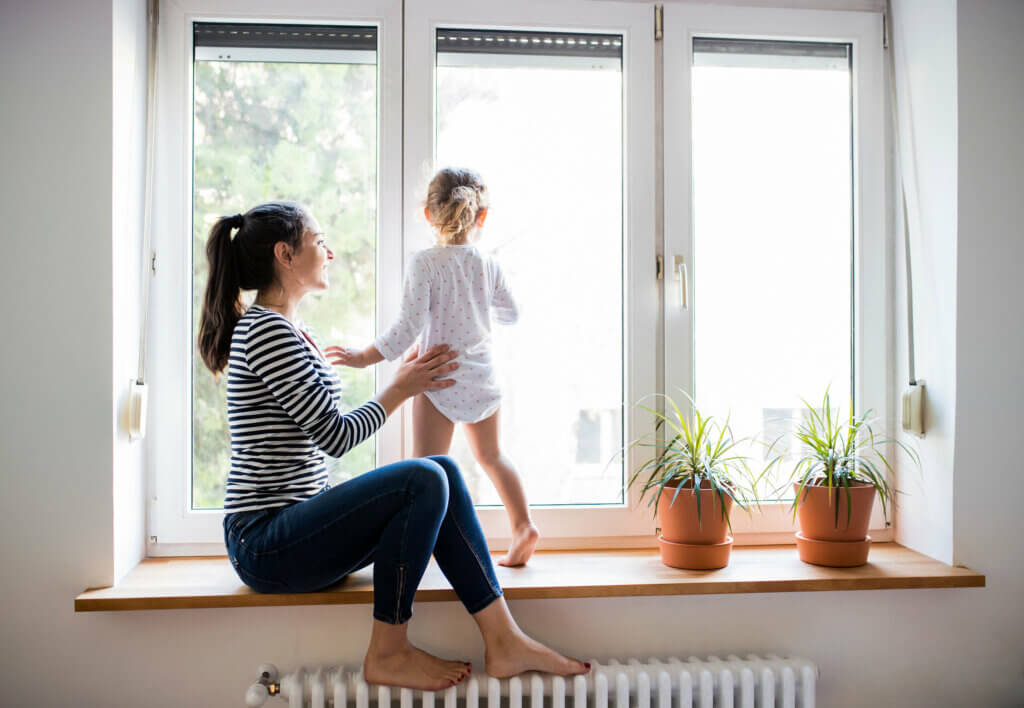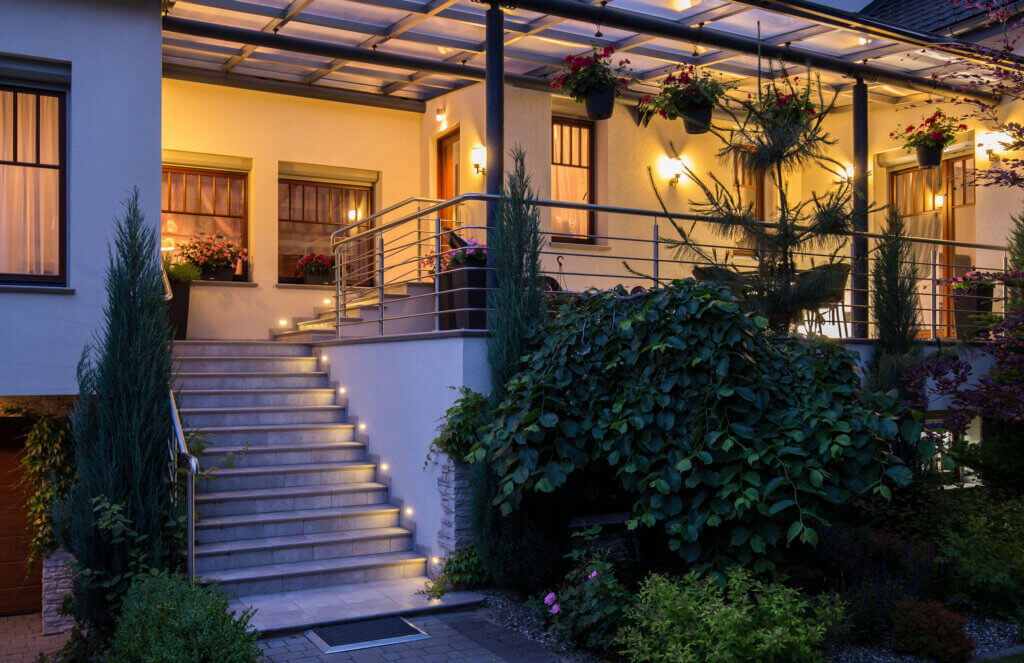Types of Lighting in Decoration

Lighting isn’t only useful, it’s also part of the aesthetics and gives personality and intentionality to your home. An example of this is focused light: an intense light used in work areas or that shines on objects to increase energy and vitality. Below, we’ll explain the other types of lighting that exist, their uses, and their effects.
Natural lighting

To speak of natural lighting is to think of the sun’s rays that enter through your windows. However, fire, stars, and the bioluminescence of animals, plants, and other organisms are also considered sources of natural light.
Now, if we only focus on the light we receive from the sun, we can highlight a series of benefits. First of all, it’s free and saves money on your electricity bill.
Second, it can have health effects such as improving sleep quality and reducing depression. Third and last, you can use the other types of lighting as a reinforcement for areas where rays of light don’t reach.
Types of lighting: general
General lighting is the base or main light in a room. It’s characterized by being homogeneous; in other words, it distributes the light evenly. Likewise, these lamps or wall lights usually spend a large part of the day switched on, which is why it’s recommended to use low-energy light bulbs.
Ambient lighting
There are many who confuse this type of lighting with the previous one. But the difference is that ambient light is dimmer and its function isn’t to provide visibility to the room. On the contrary, it seeks to create a pleasant and welcoming atmosphere.
In that sense, ambient lighting could also be used to delimit different spaces. For example, you can switch on the ambient lights to create a more romantic atmosphere during dinner in your dining room.
Decorative lighting
It focuses on highlighting an object or area of the home and making it the protagonist. This can be the case for a painting, a sculpture, a display case, a fish tank, or a garden fountain, among others.
Types of lighting: spot or focused
It’s usually the most intense form of lighting since it’s used to illuminate a place where a task or activity is carried out. For example, the office, the dining room or the dressing table. Likewise, it’s advisable that the lamp you choose doesn’t have a tendency to overheat. Otherwise, it can create a lot of heat and make undertaking your task uncomfortable.
Functional lighting
This corresponds to the lights that are placed in corridors and closets. To reduce electricity consumption, it’s recommended to use LED or energy-saving light bulbs. Likewise, it’s ideal for installing motion sensors.
Kinetic lighting
As its name implies, it’s a moving light. Some examples that you may find at home and didn’t know about include candles and even the fire in the fireplace. For this reason, kinetic lighting is believed to be perfect for creating an intimate and relaxing atmosphere.
Illumination according to flow

Lighting is also classified by the amount of light that reaches the environment. We’ll discuss this in more detail below:
- Direct. This is characterized by a beam of light that points directly to the object or area, which allows the area to be used entirely. Likewise, it can be found in general, decorative and specific lighting, offered by pendant lamps, recessed lights, and floor lamps, among others.
- Semi-direct. It’s a direct light with a diffuser or translucent glass, which causes the object or surface to only receive between 20 to 40 percent of the light. It’s common to find semi-direct lighting in bedrooms, hallways, terraces, among others.
- Indirect. This is an accessory that makes 100 percent of the light go to the wall so that the lighting is provided by a reflection effect. Also, it’s a popular choice in bars and restaurants.
- Semi-indirect. This light is directed to the object or area by a diffuser. It’s often used in patios, gardens, and terraces.
- Mixed. It directs 50 percent of diffused light towards the ceiling and 50 percent of diffused light to the object or area. However, although its uses are limited due to its opacity, it can be found in bars, discos, and even bedrooms and rest rooms.
Types of lighting: each one is important
Lighting is essential for decoration. Not only can it make your painting look different, but it can also enhance the ornaments you purchased and that you love so much. And if we go even further, it can increase your productivity and even improve your health. If you haven’t integrated these types of lighting into your home, consider doing so and you’ll notice the change.
Lighting isn’t only useful, it’s also part of the aesthetics and gives personality and intentionality to your home. An example of this is focused light: an intense light used in work areas or that shines on objects to increase energy and vitality. Below, we’ll explain the other types of lighting that exist, their uses, and their effects.
Natural lighting

To speak of natural lighting is to think of the sun’s rays that enter through your windows. However, fire, stars, and the bioluminescence of animals, plants, and other organisms are also considered sources of natural light.
Now, if we only focus on the light we receive from the sun, we can highlight a series of benefits. First of all, it’s free and saves money on your electricity bill.
Second, it can have health effects such as improving sleep quality and reducing depression. Third and last, you can use the other types of lighting as a reinforcement for areas where rays of light don’t reach.
Types of lighting: general
General lighting is the base or main light in a room. It’s characterized by being homogeneous; in other words, it distributes the light evenly. Likewise, these lamps or wall lights usually spend a large part of the day switched on, which is why it’s recommended to use low-energy light bulbs.
Ambient lighting
There are many who confuse this type of lighting with the previous one. But the difference is that ambient light is dimmer and its function isn’t to provide visibility to the room. On the contrary, it seeks to create a pleasant and welcoming atmosphere.
In that sense, ambient lighting could also be used to delimit different spaces. For example, you can switch on the ambient lights to create a more romantic atmosphere during dinner in your dining room.
Decorative lighting
It focuses on highlighting an object or area of the home and making it the protagonist. This can be the case for a painting, a sculpture, a display case, a fish tank, or a garden fountain, among others.
Types of lighting: spot or focused
It’s usually the most intense form of lighting since it’s used to illuminate a place where a task or activity is carried out. For example, the office, the dining room or the dressing table. Likewise, it’s advisable that the lamp you choose doesn’t have a tendency to overheat. Otherwise, it can create a lot of heat and make undertaking your task uncomfortable.
Functional lighting
This corresponds to the lights that are placed in corridors and closets. To reduce electricity consumption, it’s recommended to use LED or energy-saving light bulbs. Likewise, it’s ideal for installing motion sensors.
Kinetic lighting
As its name implies, it’s a moving light. Some examples that you may find at home and didn’t know about include candles and even the fire in the fireplace. For this reason, kinetic lighting is believed to be perfect for creating an intimate and relaxing atmosphere.
Illumination according to flow

Lighting is also classified by the amount of light that reaches the environment. We’ll discuss this in more detail below:
- Direct. This is characterized by a beam of light that points directly to the object or area, which allows the area to be used entirely. Likewise, it can be found in general, decorative and specific lighting, offered by pendant lamps, recessed lights, and floor lamps, among others.
- Semi-direct. It’s a direct light with a diffuser or translucent glass, which causes the object or surface to only receive between 20 to 40 percent of the light. It’s common to find semi-direct lighting in bedrooms, hallways, terraces, among others.
- Indirect. This is an accessory that makes 100 percent of the light go to the wall so that the lighting is provided by a reflection effect. Also, it’s a popular choice in bars and restaurants.
- Semi-indirect. This light is directed to the object or area by a diffuser. It’s often used in patios, gardens, and terraces.
- Mixed. It directs 50 percent of diffused light towards the ceiling and 50 percent of diffused light to the object or area. However, although its uses are limited due to its opacity, it can be found in bars, discos, and even bedrooms and rest rooms.
Types of lighting: each one is important
Lighting is essential for decoration. Not only can it make your painting look different, but it can also enhance the ornaments you purchased and that you love so much. And if we go even further, it can increase your productivity and even improve your health. If you haven’t integrated these types of lighting into your home, consider doing so and you’ll notice the change.
All cited sources were thoroughly reviewed by our team to ensure their quality, reliability, currency, and validity. The bibliography of this article was considered reliable and of academic or scientific accuracy.
- Boubekri, M., Cheung, I. N., Reid, K. J., Wang, C. H., & Zee, P. C. (2014). Impact of windows and daylight exposure on overall health and sleep quality of office workers: a case-control pilot study. Journal of clinical sleep medicine : JCSM : official publication of the American Academy of Sleep Medicine, 10(6), 603–611. https://doi.org/10.5664/jcsm.3780







